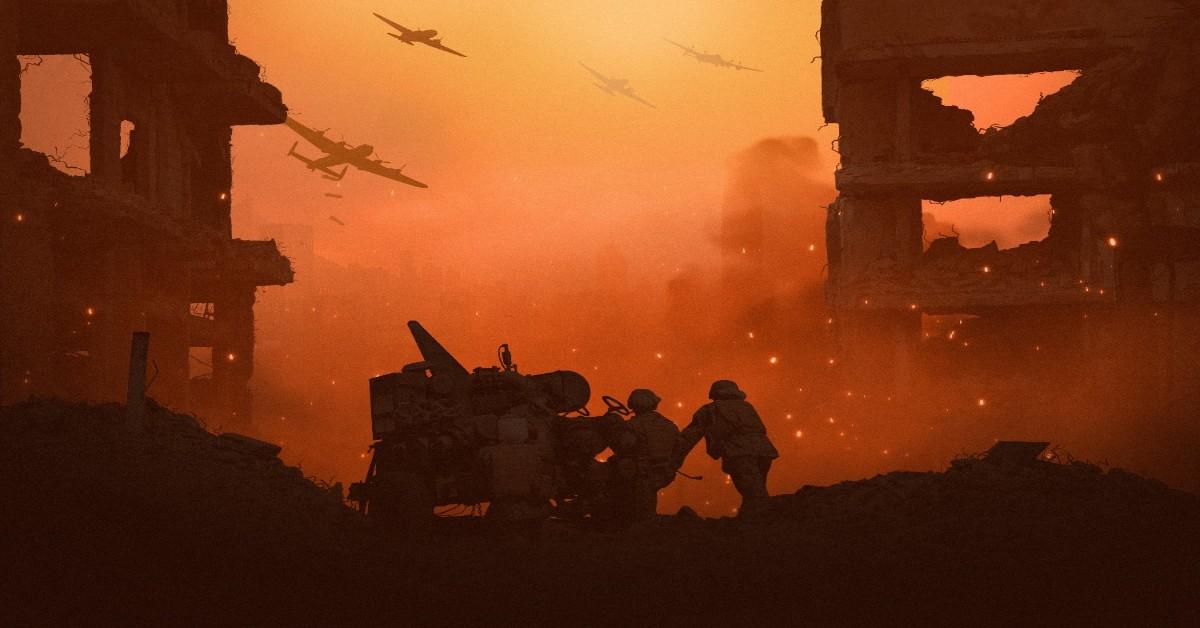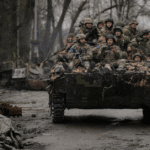How Did India-Pakistan War in 1971? The Untold Story Behind the War
You’ve probably heard about the India-Pakistan War—the cricket matches, the border tensions, the political drama. But the 1971 war? That’s where things got real. For 13 days, India and Pakistan clashed in a conflict that reshaped South Asia forever. But how did India pull off a victory that led to Pakistan’s surrender? Let’s break it down—no jargon, just the raw, human story.
What Sparked the 1971 India-Pakistan War?
It wasn’t just about borders. The roots go deeper. After the 1947 partition, Pakistan split into East and West Pakistan—separated by 1,600 km of Indian territory. East Pakistan (today’s Bangladesh) felt marginalized: culturally, economically, and politically. By 1971, protests erupted. Pakistan’s military cracked down brutally—killings, rapes, mass displacement. Nearly 10 million refugees fled to India.
India, already strained by refugee costs and regional instability, saw an opportunity. Prime Minister Indira Gandhi declared, “We cannot remain silent when a humanitarian crisis is unfolding at our doorstep.” The stage was set.
The 13-Day War: A Timeline That Changed History
Here’s how it unfolded:
March 1971: Pakistan’s Operation Searchlight targets Bengali intellectuals and activists.
August 1971: India signs a treaty with the USSR, securing military backing.
December 3: Pakistan bombs Indian airfields, triggering all-out war.
December 4–16: India launches a three-front offensive—land, air, and sea.
December 16: Pakistan surrenders. 93,000 soldiers taken prisoner—the largest since WWII.
India’s strategy? Speed. They exploited Pakistan’s logistical weaknesses—cutting supply lines, dominating the skies, and supporting Bengali guerrillas (Mukti Bahini).
Key Battles: How India Outsmarted Pakistan
Battle of Longewala: 120 Indian soldiers vs. 2,000 Pakistani troops. Using jeep-mounted missiles and air support, India held the line.
Naval Blockade: India sank Pakistan’s flagship PNS Ghazi, crippling their navy.
Dhaka Dash: Indian tanks covered 160 km in 48 hours—catching Pakistan off guard.
General Sam Manekshaw, India’s Army Chief, famously said: “Give me time, and I’ll give you victory.” He waited for winter, ensuring mountain passes were blocked—preventing Chinese intervention.

The Shadow War: How India’s Intelligence Turned the Tide
While tanks and jets grabbed headlines—India’s real secret weapon was RAW (Research & Analysis Wing). Established just 3 years before the war, RAW operatives orchestrated a covert campaign that crippled Pakistan’s grip on East Pakistan.
Operation Jackpot: RAW smuggled 10,000+ rifles, grenades, and anti-tank mines to the Mukti Bahini. They even set up guerrilla training camps in India’s Northeast.
Radio Warfare: A fake radio station, “Swadhin Bangla Betar Kendra”, broadcast coded messages to freedom fighters—and demoralized Pakistani troops with propaganda. One broadcast falsely claimed 50,000 Indian troops were advancing—triggering panic retreats.
Sabotage Missions: RAW agents blew up bridges, fuel depots, and power grids. In Chittagong, they sank ships carrying Pakistani reinforcements using underwater explosives.
Former RAW officer B. Raman later wrote: “We weren’t just fighting a war—we were rewriting the rules of engagement.” Declassified files reveal the CIA called RAW’s ops “the most effective asymmetric warfare of the Cold War.”
The Shimla Agreement: Why Peace Didn’t Last
After the surrender, India and Pakistan signed the 1972 Shimla Agreement—a blueprint for peace that backfired. Key clauses:
Prisoner Return: India repatriated 93,000 POWs, hoping for goodwill.
Kashmir Clause: Both nations agreed to resolve Kashmir bilaterally—no third-party mediation.
But the deal had fatal flaws:
No Binding Timeline: Kashmir talks stalled indefinitely. Pakistan used the delay to reignite proxy wars (e.g., 1980s Sikh insurgency).
Missed Demilitarization: India kept 80% of captured territory but returned strategic hills like Haji Pir Pass—a move critics call “strategic generosity gone wrong.”
Former diplomat G. Parthasarathy argued: “Shimla wasn’t a failure—it was a missed opportunity. We won the war but lost the peace.” By 1999, Pakistan’s Kargil invasion proved his point.
The Indian Air Force’s Lightning Strikes: How Skies Decided the War
While ground troops grabbed attention, the Indian Air Force (IAF) executed one of the fastest air dominance campaigns in history. Pakistan’s preemptive strike on December 3, 1971—codenamed Operation Chengiz Khan—targeted Indian airfields like Agra, Ambala, and Pathankot. But India was ready.
Operation Python: IAF’s Hunters and MiG-21s destroyed 14 Pakistani aircraft on the first night—while losing just 4. By Day 3, India had air superiority.
Tangail Airdrop: In East Pakistan, IAF’s AN-12s dropped 700 paratroopers behind enemy lines, cutting off retreat routes for Pakistani forces.
Fuel Starvation: IAF bombers hit Chittagong and Dhaka’s fuel depots. Pakistani tanks and jets ran dry—literally.
Air Marshal H.C. Dewan, a 1971 veteran, recalled: “They expected us to crumble. Instead, we turned their runways into scrap metal.” By war’s end, the IAF flew 4,000+ sorties vs. Pakistan’s 2,840.
The Refugee Tsunami: How 10 Million People Forced India’s Hand
India’s decision to go to war wasn’t just strategic—it was personal. By mid-1971, 10 million refugees (mostly Hindus) poured into West Bengal, Assam, and Tripura. The scale? Imagine 30,000 people crossing the border daily.
Economic Strain: India spent ₹20 billion (3% of GDP) on refugee camps—equivalent to ₹1.2 trillion today. Food shortages spiked; diseases like cholera killed thousands.
Global Shame Campaign: Indira Gandhi toured 30+ nations, sharing photos of refugee camps. A Time magazine cover dubbed her “The Empress of India”—a nod to her diplomacy.
Moral Justification: The refugee crisis gave India global sympathy. UN’s Kurt Waldheim admitted: “No nation could tolerate such an influx.”
For survivors like Rehana Begum (a refugee in Tripura), the war was about dignity: “We didn’t want charity—we wanted our home back.”
International Reactions: Who Backed Whom?
The world watched nervously:
USA: Sent a nuclear-armed aircraft carrier to support Pakistan. Too late.
USSR: Vetoed UN resolutions against India, shielding them diplomatically.
China: Stayed neutral—despite being Pakistan’s ally. Cold War politics at play.
Indira Gandhi’s global diplomacy paid off. She even quipped, “You can’t shake hands with a clenched fist,” highlighting Pakistan’s stubbornness.
Human Cost: The Forgotten Stories
The war wasn’t just about tanks and treaties.
3 million deaths in Bangladesh (estimates vary).
400,000 women subjected to sexual violence.
10,000 Indian soldiers killed or wounded.
Survivors like Bir Bahadur Singh (a retired Indian soldier) recall: “We fought for justice—not territory.”

Why Did Pakistan Surrender So Quickly?
Three reasons:
Moral Collapse: Pakistani troops were demoralized, stranded without supplies.
Bengali Resistance: Mukti Bahini guerrillas disrupted supply lines.
India’s Coordination: Army, navy, and air force worked seamlessly.
On December 16, General Niazi signed the Instrument of Surrender. The photo of him bowing to General Aurora remains iconic.
Legacy of 1971: What Changed?
Bangladesh Born: A new nation emerged—proof of linguistic and cultural identity triumphing.
India’s Rise: Cemented as a regional power.
Pakistan’s Humiliation: Military dictatorship weakened; civilian unrest grew.
Yet, Kashmir tensions lingered. As analyst Ayesha Jalal notes: “1971 was a closure and an opening—a wound that never fully healed.”
Could Another India-Pakistan War Happen?
Possibly—but the stakes are higher. Both have nukes now. Skirmishes like the 2019 Balakot airstrikes show tensions persist. Yet, economic ties (think: Bollywood, trade) create fragile bridges.
Experts warn: “Miscalculation, not ideology, is the real threat.”
FAQs: What People Are Asking
Who won the 1971 India-Pakistan war?
India decisively. Pakistan surrendered, leading to Bangladesh’s independence.How long did the war last?
13 days (December 3–16, 1971).What was the Mukti Bahini’s role?
Bengali guerrilla force supported by India—key in destabilizing Pakistan.Did the US support Pakistan?
Yes, but delayed intervention failed to change outcomes.How many died in the war?
Estimates range from 300,000 to 3 million, mostly Bangladeshi civilians.What was the Shimla Agreement?
1972 treaty where India returned POWs in exchange for peace talks.Did China help Pakistan?
No direct military aid, despite their alliance.Why is 1971 called India’s finest hour?
Rare unity across political, military, and public fronts.What lessons did Pakistan learn?
Invest in diplomacy over brute force—still a work in progress.Has India and Pakistan fought since 1971?
Smaller conflicts (1999 Kargil War) but no full-scale war.What’s the nuclear risk today?
High—both countries have ~160 nukes each.How is the war remembered in Bangladesh?
As a liberation struggle—December 16 is Victory Day.Did the war impact Indo-US relations?
Yes—ties soured until the 2000s.Were there spies involved?
Yes—RAW’s role in training Mukti Bahini is well-documented.What if India hadn’t intervened?
Bangladesh’s independence might have been delayed—but not prevented.Did India’s spy agency RAW play a role?
Yes—covert ops included arming rebels, sabotage, and psychological warfare.Why is the Shimla Agreement controversial?
Critics argue it eased pressure on Pakistan to resolve Kashmir permanently.How did the Indian Air Force impact the war?
Secured air dominance in 72 hours, destroyed supply chains, and enabled ground victories.- Why did the refugee crisis push India into war?
The economic and humanitarian burden made intervention unavoidable—both morally and politically.
Final Thoughts: Why This War Still Matters
The 1971 war wasn’t just a military clash—it was about identity, justice, and survival. For India, it was a moment of moral clarity. For Pakistan, a reckoning. And for Bangladesh, a rebirth.
As tensions simmer today, the lessons are clear: War solves old problems but creates new ones. Dialogue? That’s the harder—but wiser—path.
Want deeper insights into global conflicts? Explore expert analyses at Gemscor.














